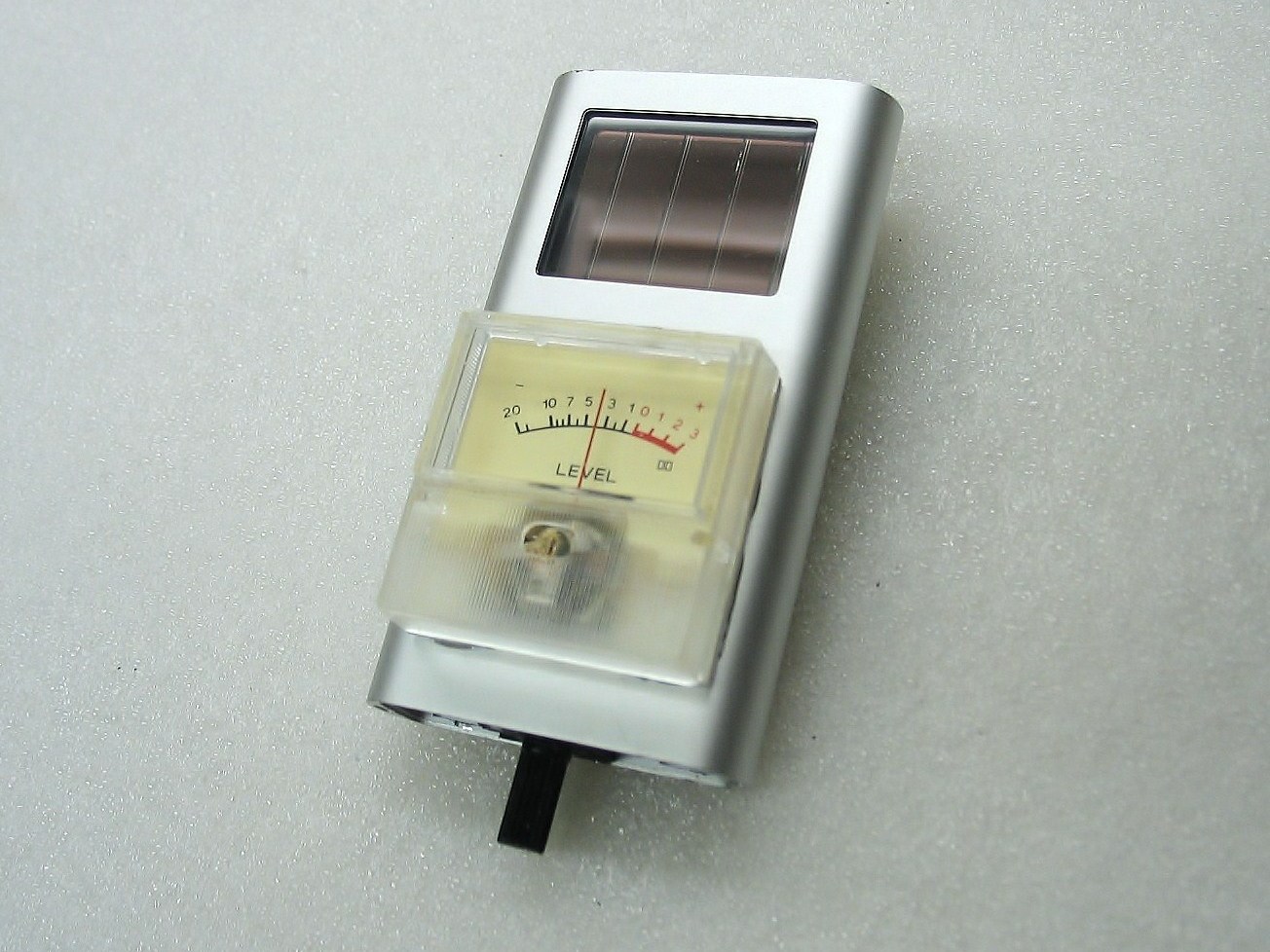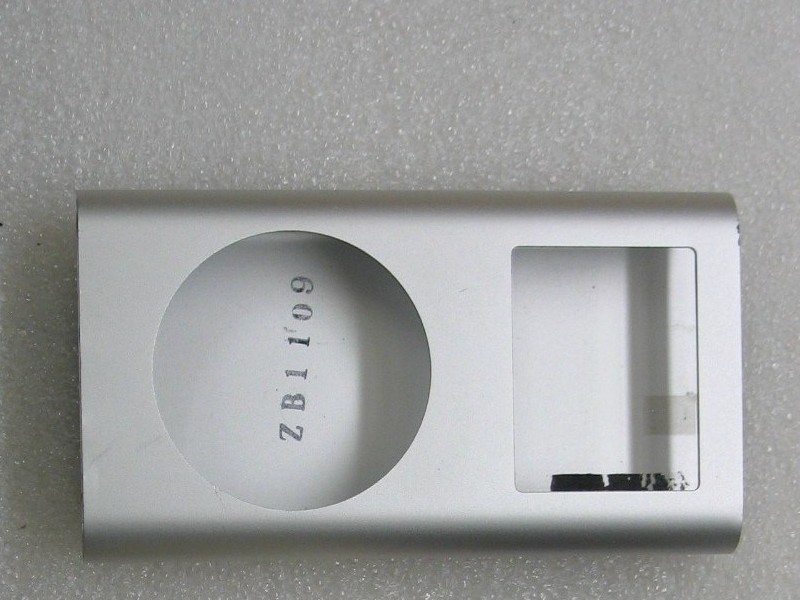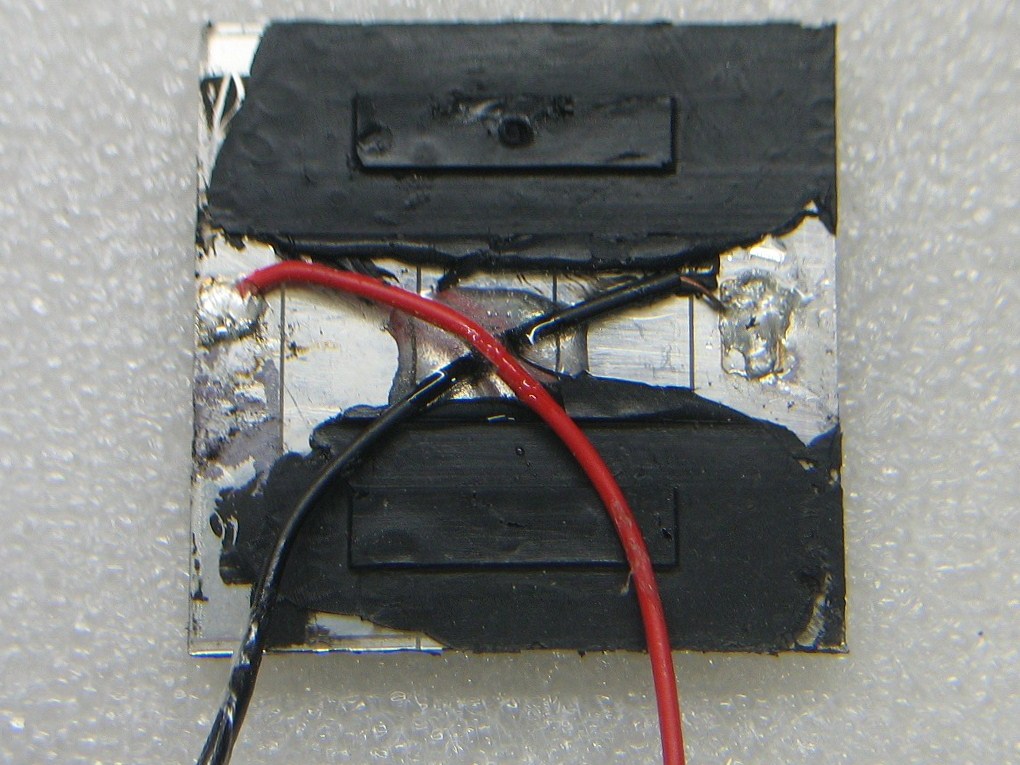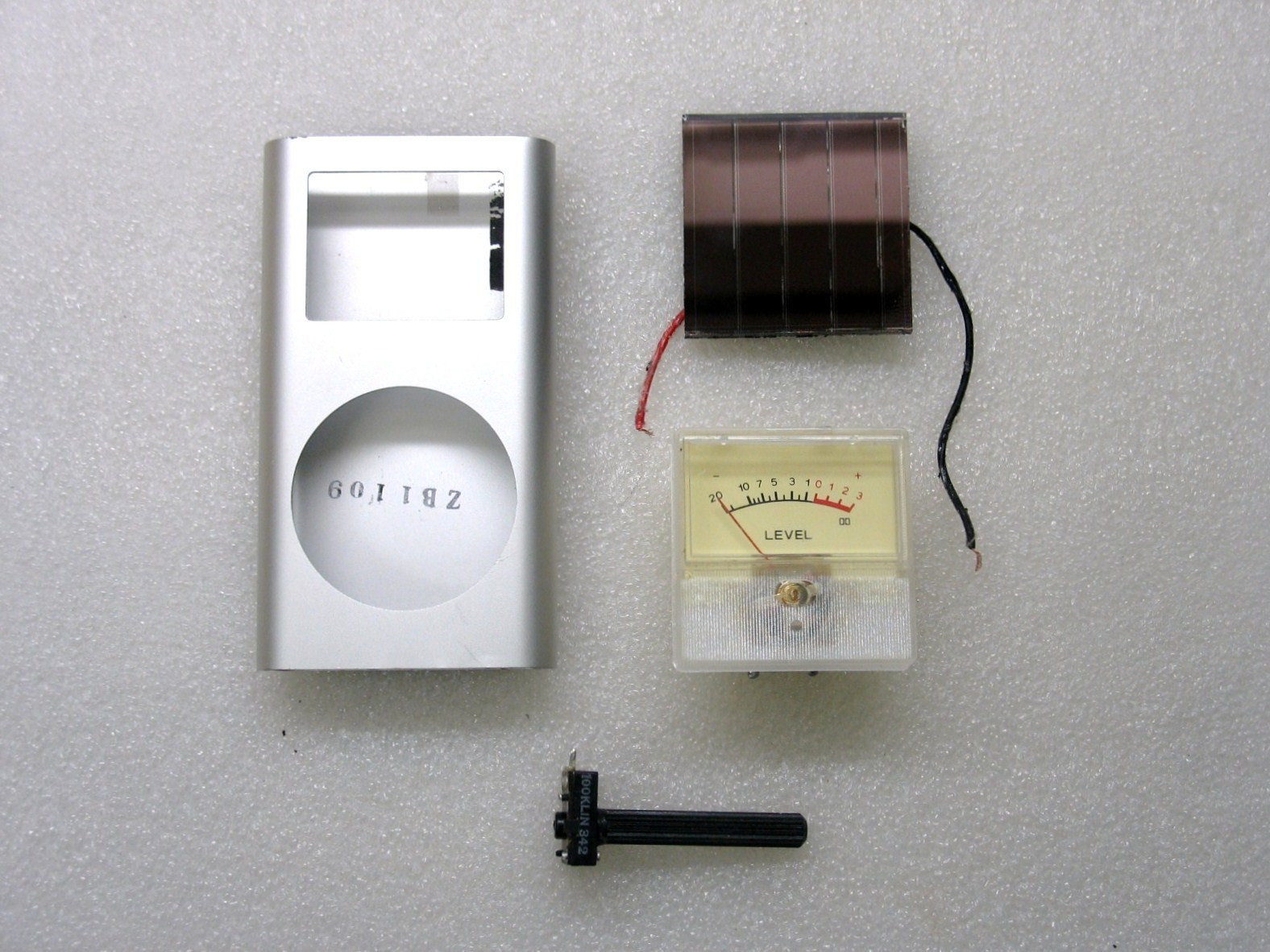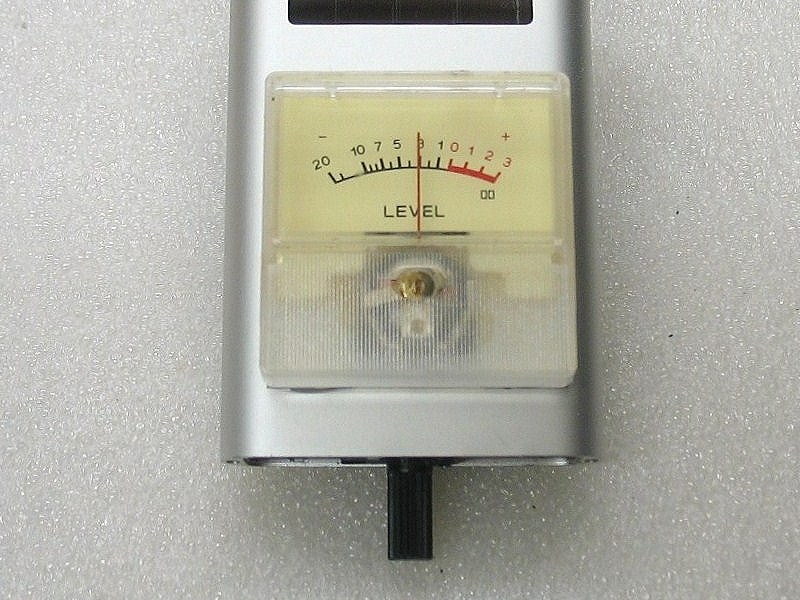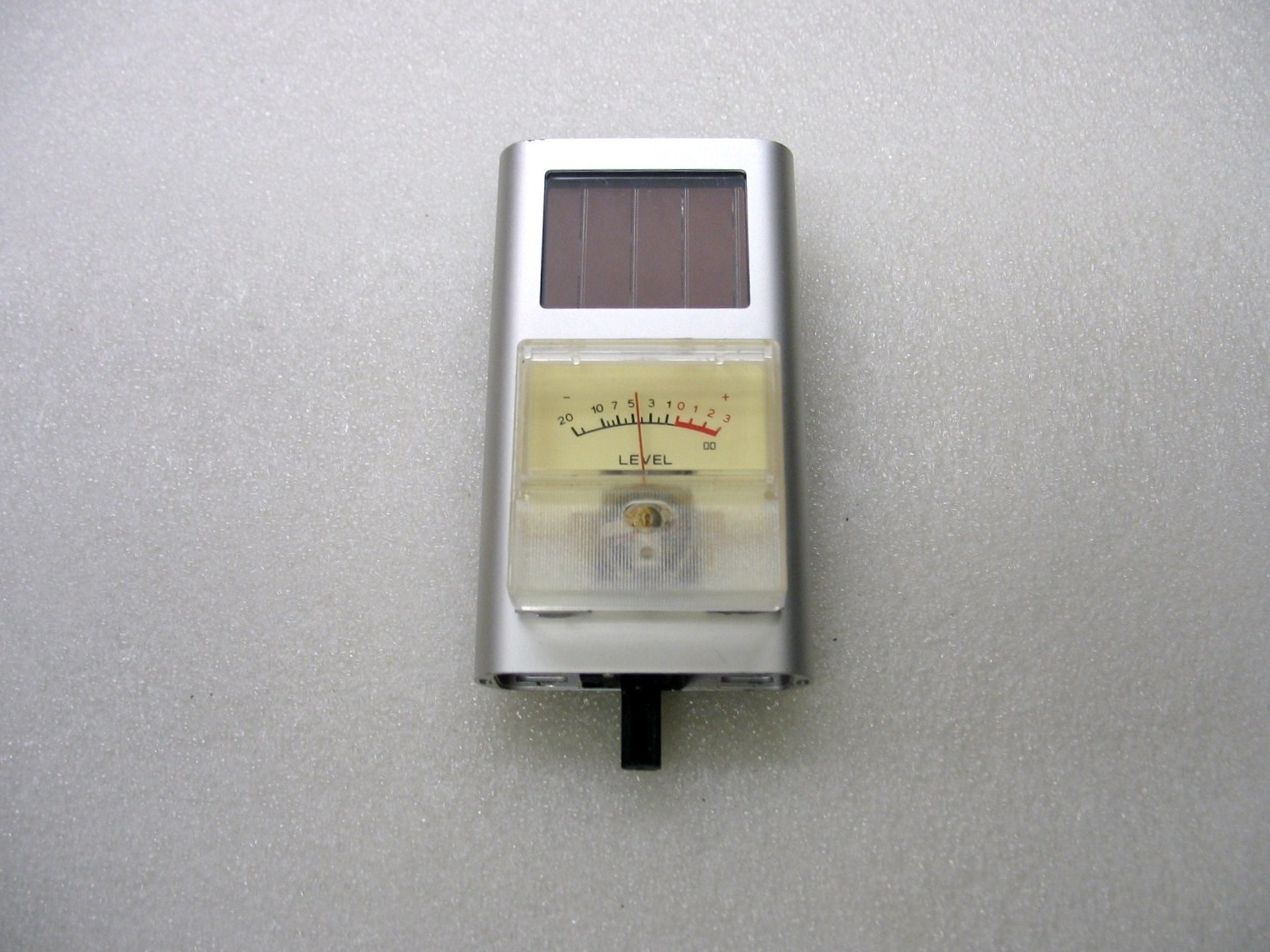In trying to determine which was the better of two LED spotlights for reading in my easy chair, I had the need for a quick and simple light meter that could tell me which of the two different brands of bulbs I had would put out the the best light from a small recessed fixture on my ceiling. They were both rated at 3 watts, each comprised of 3 individual 1-watt LEDs built into a standard base. Even though they were the same wattage, their light output just seemed different. With that, I gutted my defective iPod and kept the metal case. I removed the solar cell from one of those ridiculous solar garden lights, stole a VU meter from a 1970’s-era cassette tape deck (remember those?), and removed a small variable resistor from a discarded monitor circuit board. I put these 4 parts all together and created the “Illuminometer Pod.”
A light meter in its most basic form, the Illuminometer Pod gives a relative indication of light source intensity, not an actual measure of lumen output. This is what I wanted, a simple light meter that would give different meter needle indications from various light sources at a given distance from the source. By placing the unit directly under a light source and adjusting the variable resistor to a set marker on the meter dial, I could try different light bulbs and the meter needle would rise or fall accordingly with different light intensities. Amazingly, it can measure subtle differences in similar light sources that are barely perceptible to the human eye.



